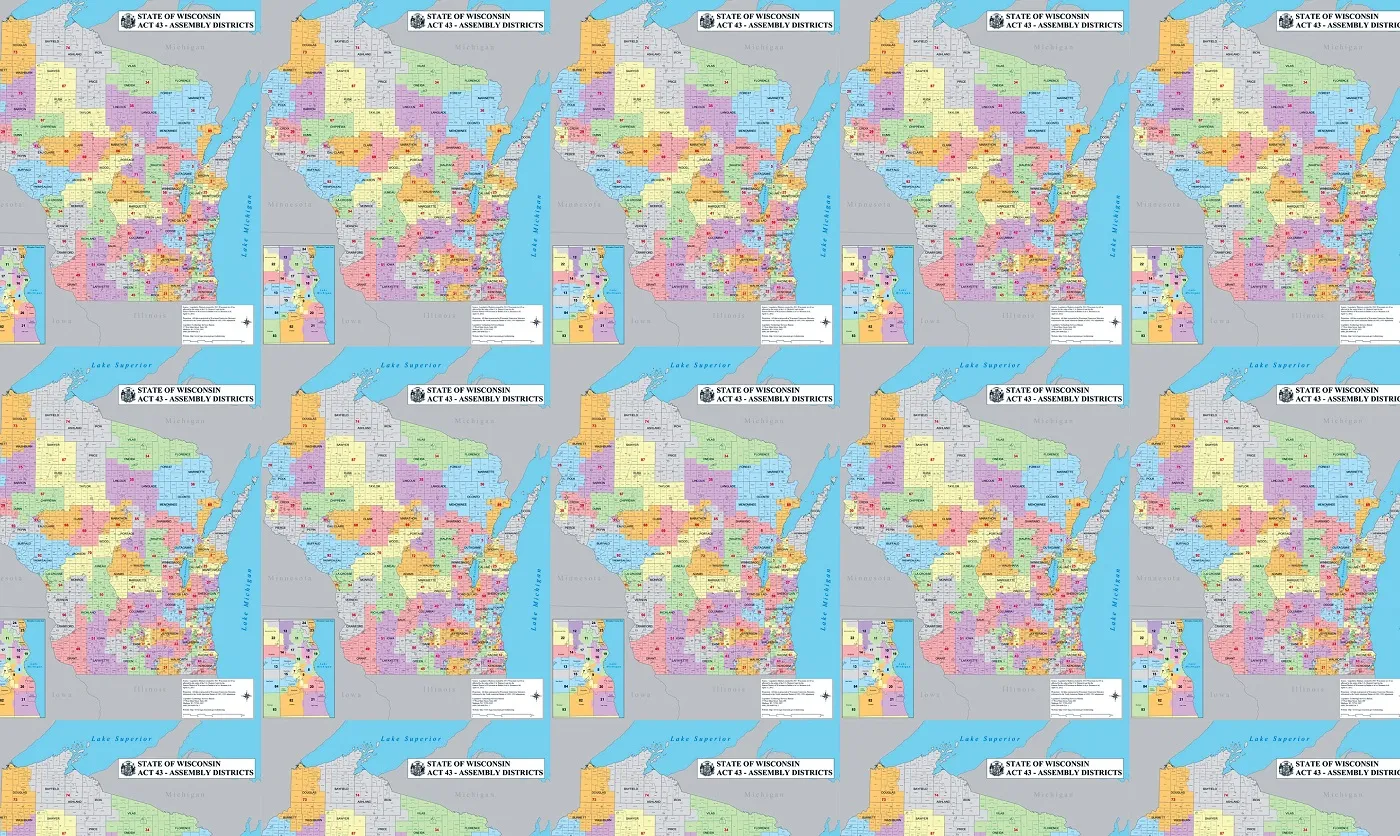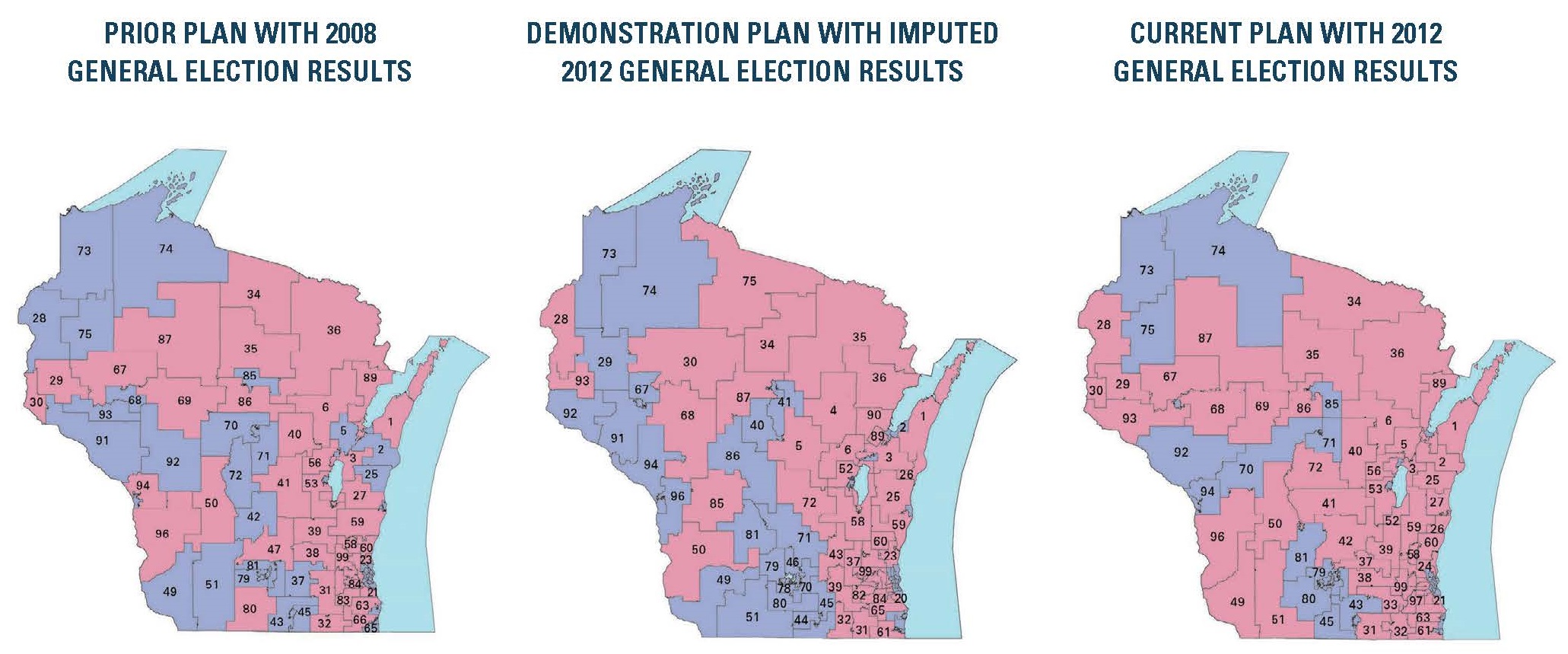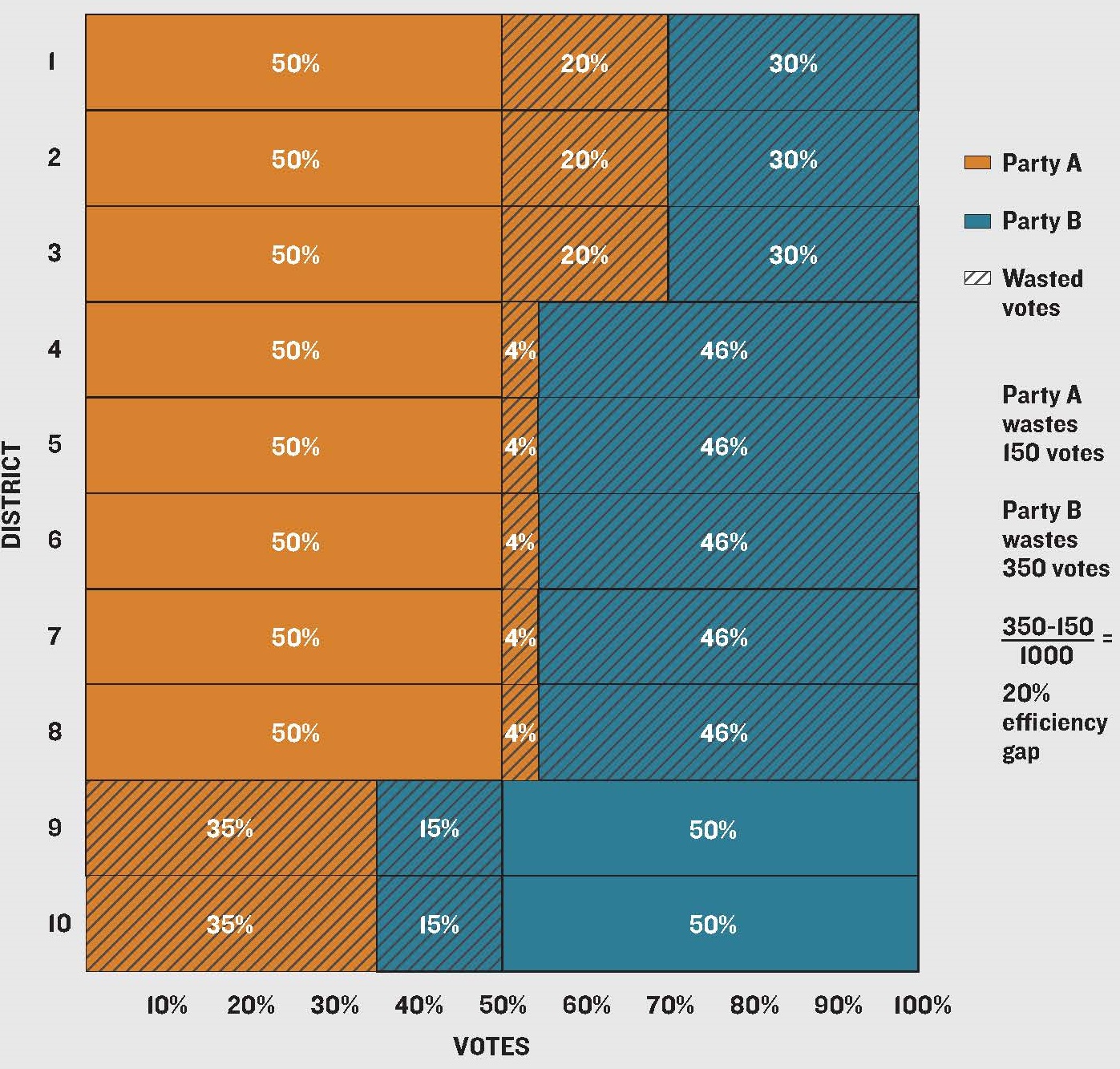Proving Partisan Gerrymandering with the Efficiency Gap

Editor's Note: The US Supreme Court is scheduled to hear oral arguments in the Wisconsin redistricting case Gill v. Whitford on October 3—and the gerrymandering metric that Professor Nicholas Stephanopoulos helped develop is expected to play a key role.
Redrawing voting districts to give one political group the advantage might strike many Americans as unfair—the sort of thing that interferes with the very foundations of democracy. Yet to this day, the US Supreme Court has never struck down an election map on the grounds that it was drawn to make sure one party would win an election. Plaintiffs who wish to bring suit to prove political gerrymandering have a doubly difficult task: they not only have to show that a district or state fails a gerrymandering test, they also have to provide the test.
Fortunately, Nicholas Stephanopoulos, Professor of Law and Herbert and Marjorie Fried Research Scholar, has found a metric that may help the courts to determine where gerrymandering is taking place. The model was originally developed by Eric McGhee, a research fellow at the Public Policy Institute of California, and Stephanopoulos worked with him to develop it into a full legal test for the courts.
“With this test, we found out empirically you can connect the party that is responsible for the redistricting with a big boost in favor of that party,” Stephanopoulos said. Their metric, called the Efficiency Gap, quantifies gerrymandering by measuring whether one party’s votes are wasted more often than the other’s—either because they have been packed into a small number of districts or spread over many so they won’t have the breadth or concentration for a win. The equation is fairly simple—and it may provide a way of demonstrating that a district plan has failed to properly convert votes to legislative seats.
The Supreme Court has never ruled that a district plan is unconstitutional on the grounds that it disadvantages voters of a particular party. But the notion that partisan gerrymandering is unconstitutional has been around since Davis v. Bandemer, a 1986 case in which the Court determined that claims of partisan gerrymandering are justiciable. Unfortunately, however, they could not agree on a clear standard for judicial review.
“From 1986 to 2004 we did have a test for political partisanship that the Supreme Court endorsed, which said that a plan is unconstitutional if it results in a consistent degradation of a political group’s influence,” Stephanopoulos said. But no one could ever show consistent degradation because courts would say, yes, you did poorly in this election, but you might do well in the next.
Then, in 2004, the Court decided in a five-to-four vote in Vieth v. Jubelirer to abandon the Bandemer test, leaving nothing in its place as a method for plaintiffs to prove partisan gerrymandering. Justice Antonin Scalia noted that there were still no “judicially discernible and manageable standards” for gauging when map drawing went too far. At the same time, Justice Anthony Kennedy noted that even though the Court hadn’t found a test it liked, he was not convinced that no test existed that could be used as a judicial standard to determine if partisan gerrymandering exists.
So for the last 13 years, those who wished to sue on grounds of gerrymandering by party could not win a case without providing the Court with a standard that could be used to determine where map lines went too far. Other cases, however, were decided on a basis of racial bias by the court. In Cooper v. Harris, the justices decided in June that the North Carolina General Assembly used race too heavily in redrawing two congressional districts following the 2010 US Census. Evidence of racial bias and violation of the One Person, One Vote doctrine have long been the only ways to win a gerrymandering case, which Stephanopoulos thinks is unfortunate because it forces plaintiffs to contort their cases to fit the requirements. And, in cases of partisan gerrymandering, race is not always a factor. Naturally, since 2004, new tests to prove political bias in the drawing of electoral maps have been conceived, but none have yet persuaded the court. Stephanopoulos and McGhee think that their test could be a new standard.
The Efficiency Gap calculates the impact of the two mechanisms that lead to wasted votes: “packing,” which means one side’s votes have been overconcentrated so they win by huge margins in a small number of districts (creating a surplus of votes); and “cracking,” which means distributing one side’s votes over lots of districts, so they lose each district by a relatively narrow margin (creating lost votes). Either way, the ballots don’t contribute to a candidate’s victory.
In an ideal world, both parties would waste the same number of votes, which would create an Efficiency Gap of zero. When a district is gerrymandered by representatives of one party or the other, they try to maximize the number of wasted votes for their opponents and minimize the number of wasted votes for their own side.
Stephanopoulos and McGhee use an example in their paper, “Partisan Gerrymandering and the Efficiency Gap,” of a state with 10 districts of 100 voters apiece. Party A wins 55 percent of the statewide vote, or 550 votes, while Party B wins 450. Party A received 70 votes in three districts (which would be a waste of 60 of Party A’s votes), 54 votes in an additional five districts (a waste of 20 votes), and 35 votes in the final two districts, where all the votes are wasted because their candidate did not win. At the same time, Party B wasted 30 votes in each of three districts, 46 in each of five districts, and 15 votes in the last two districts. Thus all together, Party A wasted 150 votes and Party B wasted 350. The difference between the parties’ wasted votes is 200, which is then divided by 1,000, or the total number of votes, to produce an Efficiency Gap of 20 percent. This would mean that Party A would win two more seats or 20 percent more seats than it would have had the parties wasted an equal number of votes, despite having received a majority of the popular vote in the state.
“Today we have so much data that gerrymanders have become very complex,” Stephanopoulos explained. “But you don’t really need all of that complexity except at the margins. All you need, if given presidential elections results by ward or by precinct, is to draw as many 56 to 44 districts for your party as possible and then lump your opponents into the remaining districts. With that, you can dominate a state.” While it may initially make sense for districts to be drawn in a 51 to 49 ratio, he pointed out, a larger margin allows for slight miscalculations and changes of heart by a few voters.
Districts are redrawn after each census in order to ensure that each congressional district within a state has about the same number of voters, which is required under the One Person, One Vote doctrine, established in 1964 as part of the decision in Reynolds v. Sims. In that case, the Supreme Court ruled that under the Equal Protection Clause state legislatures had to redistrict in order to have congressional districts with roughly equal populations so that all votes within the state would be equally influential. Districts are generally drawn up by elected legislators, who would tend to favor their own parties if one party is more dominant in the state. In about a dozen states there are bipartisan commissions that do the line drawing in an attempt to avoid partisanship. But in all cases, if elected branches can’t agree on a map, a court will end up drawing a plan.
Gerrymandering is a term that was originally used to describe the redrawing of Massachusetts state senate districts to benefit the Democratic-Republican Party in 1812 under Governor Elbridge Gerry. But while the term is more than 200 years old, the practice may be even older. When the United States was still in its infancy, some scholars argue, Patrick Henry drew a congressional district in Virginia that he thought would ensure James Madison’s defeat in the 1789 election. However, with clever campaigning, Madison managed to defeat his opponent, James Monroe, thus ending the only congressional race to date that pitted two future presidents against one another.
But proving that gerrymandering has a partisan intention has historically been very difficult. The most obvious way to look at gerrymandering is to consider how far off from proportional representation an election result is. For example, does a party that gets 55 percent of the vote actually get 55 percent of the seats in a state? But that is not acceptable to the Court. “It has said very clearly that parity cannot be the test because the constitution does not require proportional representation. Rather, the courts are looking for symmetry,” Stephanopoulos said.
If a state has a zero Efficiency Gap, that means the number of votes wasted by both parties is the same. Plus, the test implies a two-to-one ratio, meaning that for every point of vote share a party receives in an election, that party should receive two points of seat share in the legislature. Right now, a gerrymandering case is before the Supreme Court that proposes to use the Efficiency Gap as a way to evaluate whether election districts are overly partisan.
Gill v. Whitford challenges the election borders that were crafted by Wisconsin Republicans in 2011 for state assembly seats. Stephanopoulos, who wrote the brief for the case, and his team claim that the gerrymander was so effective in 2012 that the Republicans won 60 of the 99 available seats—in spite of the fact that Democratic candidates won more votes. Three federal judges reviewed the district lines and concluded in November 2016 that the borders were unconstitutional and sent the maps back to the state to be redrawn. However, while the Supreme Court agreed in June to hear the case argued, they also issued a stay on the redrawing of the districts. “Granting the stay is a bad sign relative to denying the stay, but I don’t think one can read too much into it. The Court also accelerated when it’s going to hear the case, which points in the other direction. The only reason to accelerate the case is if there’s a chance that we’ll win and that remedies will need to be put in place by the 2018 election,” Stephanopoulos noted.
These maps, which were among the exhibits submitted with the lawsuit challenging Wisconsin election borders, show legislative districts before and after the current plan was put into place by Wisconsin Republicans in 2011. The middle map shows how 2012 election results would have looked under a plan proposed by Stephanopoulos and his team.
Stephanopoulos’s legal team has strong evidence of intentional partisan gerrymandering in Wisconsin that includes all of the draft maps that were created by the legislators who drew up the districts, along with spreadsheets that track the number of Republican seats and the number of Democratic seats under different plans.
“Through different iterations we can see the number of Republican seats going up by 10,” Stephanopoulos explained. “We also have statements that Republicans were willing to have their districts become less electorally safe—that they were willing to donate Republicans from heavily Republican districts to weaker areas. We also have the line drawers telling the Republican caucus something like, ‘You better all vote for these maps because they are going to determine how many of you are here in 10 years.’”
Of course, the team also has the results of applying the Efficiency Gap. A review of election districts around the country since 1972 shows that an Efficiency Gap of 7 percent is enough to entrench the majority until new districts are drawn. In other words, when one party gets the other party to waste more than 7 percent more of its vote, it is getting a huge advantage. Plus, the losing party will have little chance of overcoming this handicap until the next redistricting takes place—which could be nearly a decade away. For the 2012 election, Stephanopoulos and McGhee found efficiency gaps for 38 state legislature district maps. Of those, 15 had efficiency gaps above 7 percent. This makes the current Wisconsin score of 13 percent look especially bad.
Currently, the Efficiency Gap is only one of several tests in play. One of these alternate tests is the mean-median difference. In a closely contested state, some statisticians argue, the median (the middle value) percentage of votes and the mean (the average) percentage of votes for a party should be close together, and if they are very far apart it can be evidence of partisan gerrymandering. In Wisconsin from 1984 to 2000, the mean-median difference was just .1 percent for the Republicans. From 2012 through 2016, the mean-median difference had exploded to 6.4 percent in favor of the Republican Party. Thus, while taking a completely different approach, this test still makes Wisconsin’s gerrymandering look pretty extreme, and North Carolina’s elections maps don’t look much better.
Consequently, the cases in which Stephanopoulos is involved are not looking to make the Efficiency Gap the sole standard for determining political partisanship at this point. “We are not asking the court to use our test exclusively—that would be ridiculous because the justices are not methodologists, that would be something that shakes out over time,” Stephanopoulos noted. Rather, they are asking the Court to recognize that if several metrics show these states in a negative light with regard to political partisanship, then the Court should finally be able to make a decision that rejects election districts based on partisan gerrymandering. On the other hand, if these tests are all rejected, plaintiffs will go back to the drawing board to come up with yet another metric in hopes of satisfying the Court, allowing concerns about unfair elections and misrepresentation to persist until they do.
Understanding the Efficiency Gap
The Efficiency Gap calculates the impact of the two mechanisms that lead to wasted votes: “packing,” which means one side’s votes have been overconcentrated so they win by huge margins in a small number of districts, and “cracking,” which means distributing one side’s votes over lots of districts, so they lose each district by a relatively narrow margin. The first creates a surplus of votes, and the second creates lost votes; either way, the ballots don’t contribute to a candidate’s victory. The example below illustrates how an imbalance in wasted votes give Party A an advantage over Party B.
In this example, a state has 10 districts of 100 votes each. Party A wins 55 percent of the statewide vote, or 550 votes, while Party B wins 450. Party A wastes 150 votes (80 are surplus and 70 are lost)—but Party B wastes 350 (30 are surplus and 320 are lost). That’s 200 more wasted votes than Party A. Divide that by the total number of votes (1,000) and you get an Efficiency Gap of 20 percent.





